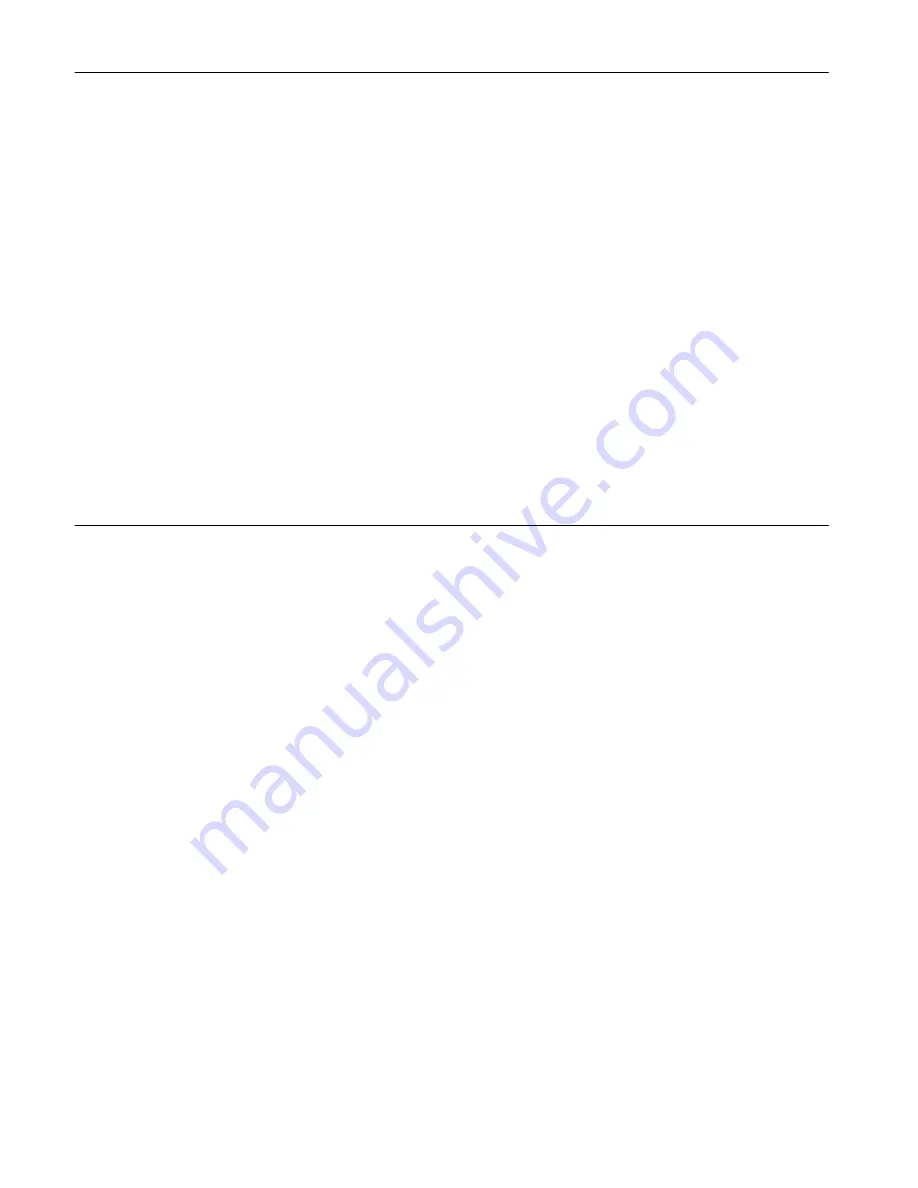
6
F. Sound Levels 10.
Although system noise levels can be reduced by modifying
pump design, fluid conditions also play a major part in
reducing system noise levels.
Some of the major factors affecting the fluid conditions that
cause the loudest noises in a hydraulic system are:
1. Very high viscosities at start-up temperatures can
cause pump noise due to cavitation.
2. Running with a moderately high viscosity fluid will
impede the release of entrained air. The fluid will not be
completely purged of such air in the time it remains in the
reservoir before recycling through the system.
3. Aerated fluid can be caused by ingestion of air
through the pipe joints of inlet lines, high velocity discharge
lines, cylinder rod packings or by fluid discharging above the
fluid level in the reservoir. Air in the fluid causes a noise
similar to cavitation.
G. Overload Protection 11.
Relief valves limit pressure in the system to a prescribed
maximum and protect components from excessive pressure.
The setting of the relief valve depends on the work
requirements of the system.
H. Start-Up 12.
With a minimum drive speed of 600 RPM, a pump should
prime almost immediately if provision is made to initially
purge the air from the system.
Failure to prime within a reasonable time may result in
damage due to lack of lubrication. The pump inlet line must
be filled with fluid and must be tight and free from air leaks. It
may be necessary to crack a fitting on the outlet side of the
pump to purge air trapped in the system.
Section V – Service and Maintenance
A. Circuit Inspection 13.
Periodic inspection of the fluid condition and tube or pipe line
connections can save time-consuming breakdowns and
unnecessary parts replacement. The following should be
checked regularly:
1. All hydraulic connections must be kept tight. A loose
connection in a pressure line will permit the fluid to leak out.
If the fluid level becomes so low as to uncover the inlet pipe
opening in the reservoir, extensive damage to the pump can
result. In suction or return lines, loose connections permit air
to be drawn into the system resulting in noisy and/or erratic
operation.
2. Clean fluid is the best insurance for long service life.
Therefore, the reservoir should be checked periodically for
dirt or other contaminants. If the fluid becomes
contaminated, the system should be drained and the
reservoir cleaned before new fluid is added.
3. Filter elements also should be checked and replaced
periodically. A clogged filter element results in a higher
pressure drop. This can force particles through the filter
which would ordinarily be trapped, or can cause the by-pass
to open, resulting in a partial or complete loss of filtration.
4. Air bubbles in the reservoir can ruin the pump and
other components. If bubbles are seen, locate the source of
the air and seal the leak.
5. A pump which is running excessively hot or noisy is a
potential failure. Should a pump become noisy or
overheated, the machine should be shut down immediately
and the cause of improper operation corrected.
B. Adding Fluid to the System 14.
When hydraulic fluid is added to replenish the system, it
should always be poured through a clean wire screen (200
mesh or finer) or preferably pumped through a 10 micron
(absolute) filter.
It is important that the fluid be clean and free of any
substance which could cause improper operation or wear of
the pump or other hydraulic units. Therefore, the use of cloth
to strain the fluid should be avoided to prevent lint getting
into the system.
C. Adjustments 15.
No periodic adjustments are required, other than to maintain
proper shaft alignment with the driving medium.
D. Lubrication 16.
Internal lubrication is provided by the fluid in the system.
Lubrication of the shaft coupling should be as specified by
their manufacturers. Coat shaft splines with a dry lubricant
(Molycoat or equivalent) to prevent wear.
E. Replacement Parts 17.
Reliable operation throughout the specified operating
range is assured only if genuine Vickers parts are used.
Sophisticated design processes and material are used
in the manufacture of our parts.
Substitutes may result in early failure. Part numbers are
shown in the parts drawings listed in Table 1.
Repair Kits – Commonly replace parts usually provided
in the form of a kit. (See Figure 4.) It is recommended
that all such parts be replaced with the kit when a unit is
overhauled.





























